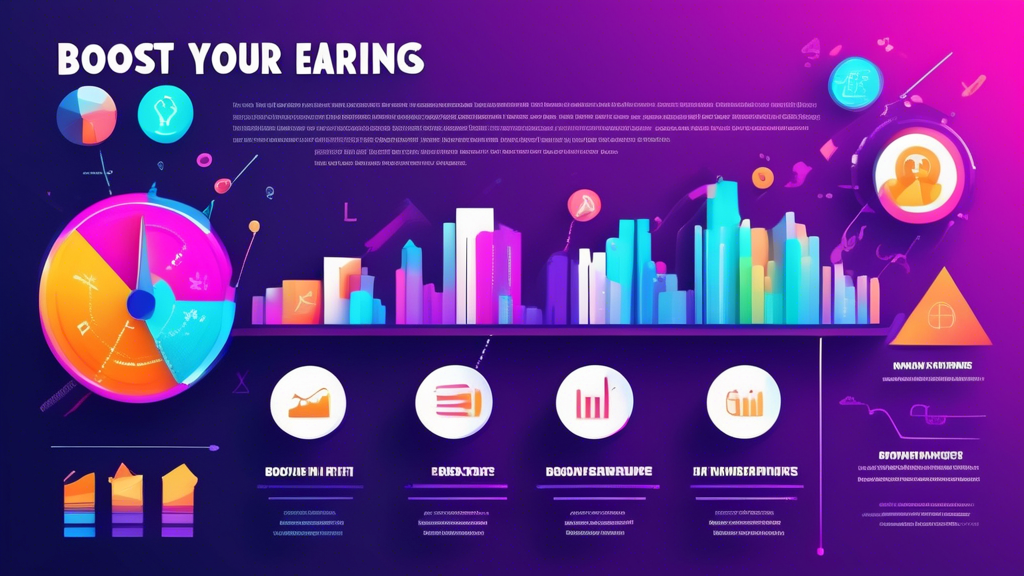Introduction
In the fast-paced digital landscape of 2023, understanding the best social media to advertise your business has never been more crucial. With billions of users actively engaging across various platforms, businesses must strategically select where to allocate their advertising efforts. This choice not only influences visibility and engagement but also directly impacts the return on investment (ROI).
This article dives into the top social media platforms that can elevate your business advertising strategy. We will explore their unique features, user demographics, and engagement statistics to help you make informed decisions. Whether you’re a small startup or a large corporation, identifying the right platform is key to maximizing your advertising potential and reaching your target audience effectively.
Top Social Media Platforms for Business Advertising in 2023
In the rapidly evolving digital landscape, selecting the best social media to advertise your business is more important than ever. With a plethora of platforms available, it becomes crucial to identify which networks align with your business’s goals, target audience, and content strategy. In 2023, several social media platforms have emerged as frontrunners in the advertising domain, with unique user bases and features designed to maximize engagement and sales.
Overview of the Most Popular Social Media Platforms
As of 2023, the top social media platforms for advertising include Facebook, Instagram, Twitter, LinkedIn, and TikTok. Each of these platforms attracts millions, if not billions, of active users from diverse demographics, giving businesses the opportunity to reach their target audiences effectively. Below is a snapshot of these platforms:
- Facebook: With over 2.9 billion monthly active users, Facebook remains the largest social media network. It offers businesses access to a vast audience, allowing for precise targeting based on user habits and interests.
- Instagram: Boasting 1.5 billion monthly active users, Instagram is particularly popular among younger audiences. The platform emphasizes visual content, making it ideal for brands that can present compelling imagery or videos.
- Twitter: With 450 million active users, Twitter serves as a fast-paced platform for real-time engagement. It’s particularly effective for promotions, breaking news, and engaging directly with consumers.
- LinkedIn: This professional network has around 900 million users and is the go-to platform for B2B marketing. LinkedIn is perfect for businesses aiming to build professional relationships and establish thought leadership.
- TikTok: Gaining rapid popularity with over 1 billion active users, TikTok appeals predominantly to Gen Z and Millennials. Its short-form video content can lead to viral marketing opportunities.
Key Statistics on User Demographics and Engagement
Understanding user demographics and engagement levels on these platforms is crucial for marketers looking to leverage social media advertising. Here are some insights:
- According to recent statistics, Facebook has a diverse user base, with approximately 31% of users aged 25-34, making it effective for targeting millennials and older generations.
- On Instagram, over 60% of users are under 34 years old, highlighting its appeal to younger demographics. Engagement rates on Instagram are notably higher, with brands seeing around 1.22% average engagement per post.
- Twitter’s user base is slightly older, with a significant percentage of users aged 35-49. Engagement thrives during live events and trending topics.
- LinkedIn users are predominantly professionals, with 61% being between the ages of 30-65, making it ideal for businesses targeting career-minded individuals or other businesses directly.
- TikTok encounters a staggering average watch time of 52 minutes per day per user, showcasing its potential for engagement through creative content.
Why Choosing the Right Platform is Crucial for Your Advertising Strategy
Choosing the appropriate social media platform is crucial for several reasons:
- Target Audience: Different platforms attract different demographics. Identifying which platform your target audience frequently uses allows you to tailor your advertising efforts, ensuring that your message reaches the intended consumers.
- Content Format: Each social media platform supports distinct content formats that may suit your brand’s message differently. For example, if your business thrives on visual storytelling, Instagram and TikTok would likely yield better results than LinkedIn.
- Advertising Costs and ROI: The cost-effectiveness of ad campaigns varies between platforms. Successful ad spend translates to better ROI, so understanding the metrics and typical costs associated with each platform can inform your budget allocation.
- Engagement Levels: Some platforms foster higher engagement than others. Understanding where your ads will be most engaging helps to refine your strategy and optimize your marketing efforts for the best possible outcome.
As your business navigates the diverse social media landscape, examining these factors will enable you to make informed decisions regarding the best social media to advertise your business. By aligning your advertising strategy with the right platforms, your business can capitalize on effective outreach, heightened brand awareness, and ultimately, increased sales.
In conclusion, leveraging the prominent social media platforms of 2023—Facebook, Instagram, Twitter, LinkedIn, and TikTok—can significantly enhance your business’s advertising strategy. Stay tuned for our next section, where we will dissect the features and benefits of each platform, empowering you with the insights needed to craft successful campaigns.
Comparative Analysis: Features and Benefits of Each Platform
In today’s digital era, selecting the right social media platform for advertising your business is paramount to achieving successful outreach and engagement. Each social media platform offers unique features, benefits, and advertising options that can cater to different business needs. Here, we will conduct a comparative analysis of five key platforms: Facebook, Instagram, Twitter, LinkedIn, and TikTok, helping you determine the best social media to advertise your business.
1. Facebook
Facebook remains one of the most popular social media platforms, boasting over 2.8 billion monthly active users. It serves as a multifaceted advertising platform offering various tools for businesses.
- Advertising Options: Facebook provides a range of advertising formats such as image and video ads, carousel ads, and slideshow ads. You can also use Facebook Ads Manager to target specific demographics, behaviors, and interests.
- Cost-Effectiveness: The platform offers flexible budgeting options, allowing businesses to set daily or lifetime budgets. Advertisers can expect a low cost per click (CPC), which can yield a favorable return on investment (ROI).
- Analytics Tools: Facebook Insights provides valuable engagement metrics, making it easier for businesses to track the performance of their ads.
2. Instagram
Instagram, which is owned by Facebook, has grown rapidly in popularity, particularly among younger demographics, with over 1 billion active users. Its visual-centric nature makes it ideal for businesses focusing on lifestyle, fashion, beauty, and travel.
- Advertising Options: Instagram allows businesses to utilize photo ads, video ads, stories ads, and carousel ads. Instagram Shopping enables brands to sell products directly through the platform.
- Visual Engagement: With its visually engaging content, Instagram boasts higher engagement rates than other platforms. This can lead to increased brand visibility and customer interaction.
- Influencer Partnerships: The platform is a hotspot for influencer marketing, allowing businesses to collaborate with relevant influencers for authentic brand promotions.
3. Twitter
Twitter is known for its real-time engagement and concise messaging. With approximately 450 million monthly active users, it presents unique advertising opportunities for businesses looking to connect with their audience through timely content.
- Advertising Options: Twitter offers promoted tweets, promoted accounts, and promoted trends, enabling businesses to increase their visibility and follower count.
- Cost-Effectiveness: Although Twitter ads can be more expensive per engagement compared to other platforms, they often yield highly targeted traffic, making it a worthwhile investment for certain campaigns.
- Real-Time Engagement: Its fast-paced nature allows businesses to engage with trending topics or hashtags, enhancing brand awareness and community interaction.
4. LinkedIn
LinkedIn is the premier social media platform for professionals, catering primarily to business-to-business (B2B) advertising. With over 850 million members, it is ideal for companies targeting professionals and decision-makers.
- Advertising Options: LinkedIn offers a variety of ad formats, including sponsored content, message ads, and dynamic ads. These tools support targeted advertising based on job titles, industries, and company sizes.
- B2B Focus: LinkedIn is particularly effective for lead generation in B2B sectors, making it the best social media to advertise your business for those in professional services, recruiting, and technology.
- Analytics Tools: LinkedIn Campaign Manager provides detailed analytics for measuring ad performance, ideal for optimizing B2B campaigns.
5. TikTok
TikTok has rapidly gained popularity, particularly among Gen Z and younger millennials, accumulating over 1 billion monthly active users. Its short-form video content allows brands to show creativity and entertain while promoting their products.
- Advertising Options: TikTok offers various advertising options including In-Feed ads, TopView ads, and Branded Hashtag Challenges, appealing to brands looking to create viral marketing campaigns.
- Audience Engagement: TikTok’s algorithm favors engaging content, meaning businesses can achieve high visibility with captivating videos that resonate with users.
- Cost-Effectiveness: While initial ad spend may be higher, the potential for viral reach can yield significant ROI if done correctly, making it an interesting option for brands aiming for broader exposure.
Conclusion
When deciding on the best social media to advertise your business, it’s essential to consider the unique features and audience demographics of each platform. Facebook and Instagram are excellent for broad reach and visual content, while Twitter provides real-time engagement. For B2B businesses, LinkedIn stands out as the leader, and TikTok offers a fresh and interactive approach to reaching younger audiences. Assess your target market, advertising goals, and budget to determine which platform aligns best with your marketing strategy, and leverage the provided advertising tools for optimal results.
Best Practices for Advertising Your Business on Social Media
In today’s digital age, effective advertising on social media is non-negotiable for businesses aiming to thrive. With numerous platforms available, it’s essential to adopt best practices that not only capture attention but also convert interactions into tangible results. Here, we delve into tips for creating compelling ads, strategies for measuring success, and the significance of analytics in refining your social media advertising approach.
Creating Compelling Ads Tailored to Specific Platforms
The first step towards successful social media advertising is the crafting of ads that resonate with the audience. Each platform has its unique user demographics and content preferences, making it vital to tailor your ads accordingly. Here are some key tips:
- Understand Your Audience: Research who your target audience is on each platform. For instance, while LinkedIn may attract professionals and B2B audiences, Instagram caters to a younger, visually-driven demographic. Knowing your audience helps shape the content of your ads to meet their interests and lifestyle.
- Utilize High-Quality Visuals: Eye-catching images and videos can dramatically increase engagement. Use high-quality graphics and videos that align with your brand story. On visually driven platforms like Instagram and TikTok, ensure your content is not only appealing but also informative.
- Craft Engaging Copy: The text accompanying your ad must be concise, compelling, and action-oriented. Use strategic calls-to-action (CTAs) like “Shop Now,” “Learn More,” or “Sign Up Today” to encourage user interaction.
- Leverage Video Content: Videos are more engaging than static images. Platforms like Facebook and TikTok promote video content, making it an effective format for storytelling and showcasing products. Create short, informative videos that capture attention within the first few seconds.
- Experiment with Formats: Each platform offers various ad formats, from carousel ads on Facebook to Stories on Instagram. Experimenting with different formats can help determine which yields the best results for your business.
Strategies for Measuring Success and Optimizing Campaigns
After deploying your ads, understanding their performance is crucial. Successful campaigns are grounded in data-driven decision-making. Here are strategies to measure success and optimize your campaigns:
- Define Clear Objectives: Before launching an ad campaign, set clear goals, whether that’s increasing brand awareness, driving website traffic, or boosting sales. Having defined objectives will guide your measurement process.
- Utilize Tracking Tools: Platforms like Facebook and Google provide analytics tools that track metrics such as impressions, clicks, and conversions. Use these tools to assess how well your ads perform against your objectives.
- A/B Testing: Conduct A/B tests to compare different ad variations. Test different headlines, images, and CTAs to determine what resonates most with your audience. Analyzing results will reveal which elements to retain and what needs adjustment.
- Monitor Engagement Rates: Keep an eye on likes, shares, comments, and overall engagement. High engagement levels often indicate that your content is resonating with your audience, while low engagement can suggest adjustments are needed.
- Adjust Based on Insights: Use the insights gathered from your analytics to inform future campaigns. If certain ads perform better at specific times of the day or week, consider scheduling future campaigns accordingly.
The Role of Analytics in Refining Your Social Media Advertising Approach
Analytics plays a pivotal role in refining your social media advertising strategy. It provides valuable insights that can lead to continuous improvement and increased effectiveness. Here’s how analytics can drive your advertising success:
- Data-Driven Decisions: By analyzing campaign data, businesses can make informed decisions rather than relying on intuition. Understanding what works and what doesn’t can help allocate resources more effectively towards successful strategies.
- Audience Insights: Analytics can reveal key demographic information about your audience, including age, location, and interests. This information allows for more targeted advertising efforts, ensuring your message reaches the right people.
- Identifying Trends: Regularly analyzing performance data can help identify trends over time. Are certain ad formats performing better than others? Are there seasonal trends to leverage? Understanding these can aid in planning future campaigns.
- Attribution Tracking: Determine which ads or campaigns drive the most conversions. This assists businesses in understanding the customer journey and optimizing touchpoints for the best ROI.
- Continuous Experimentation: With sophisticated analytics, businesses can adopt a culture of continuous improvement. Regularly testing new ideas and analyzing results ensures that your advertising efforts evolve with changing market conditions and audience preferences.
In conclusion, the best social media to advertise your business requires a strategic approach to create compelling ads, measure their success, and refine your tactics based on analytics. By following these best practices, businesses can enhance their social media advertising efforts, ultimately leading to improved engagement and higher conversion rates.
Conclusion
In today’s digital landscape, choosing the best social media to advertise your business is essential for reaching your target audience effectively and maximizing your ROI. Each platform offers unique features and benefits tailored to different demographics and marketing goals. By understanding the strengths of platforms like Facebook, Instagram, Twitter, LinkedIn, and TikTok, you can strategically position your brand to engage with potential customers where they are most active.
Furthermore, implementing best practices for social media advertising—such as creating compelling content, leveraging analytics for optimization, and carefully measuring your campaign’s success—will enhance your ability to connect with your audience. Remember, the key to a successful advertising strategy is not just about being present on multiple platforms but rather being present in the right places and engaging meaningfully with your audience.
As you navigate the ever-evolving world of social media advertising, remain proactive, adaptable, and open to experimenting with new tactics. By staying informed about trends and embracing innovative approaches, your business can harness the full potential of social media to drive growth and achieve lasting success.










